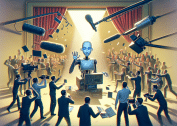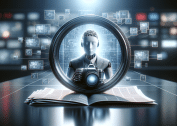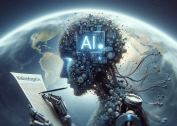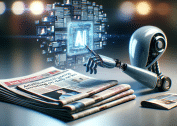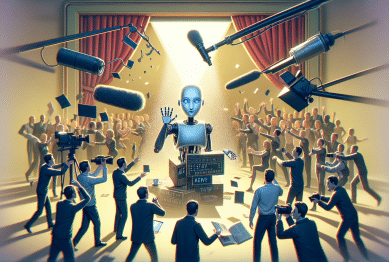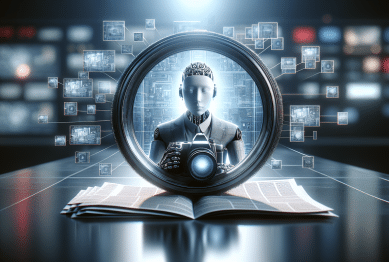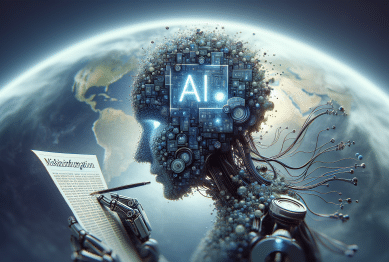In recent years, technology’s influence on modern education has profoundly transformed the educational landscape, introducing innovative tools and methodologies that enhance learning experiences. As we approach 2025, several emerging trends are poised to further revolutionize modern education.

1. Generative AI: Personalizing Learning Experiences
Generative AI is at the forefront of educational innovation, offering personalized learning experiences tailored to individual student needs. By analyzing vast amounts of data, AI can adapt content delivery, provide real-time feedback, and even generate customized learning materials. This technology enables educators to address diverse learning styles and paces, fostering a more inclusive and effective learning environment.
For instance, MagicSchool, an AI-driven platform, has raised $15 million to develop generative AI tools that assist teachers in lesson planning, test creation, and content generation. With over 2 million educators and 3,000 schools utilizing its products, MagicSchool exemplifies the growing integration of AI in education.
2. Immersive Learning: Augmented and Virtual Reality
Augmented Reality (AR) and Virtual Reality (VR) are transforming traditional classrooms into interactive learning environments. These immersive technologies allow students to engage with complex concepts through simulations and 3D models, enhancing understanding and retention. For example, medical students can practice surgeries in a virtual setting, and history students can explore ancient civilizations firsthand.
According to Hurix Digital, the adoption of AR and VR in education is expected to grow significantly by 2025, providing students with experiential learning opportunities that were previously unimaginable.
3. Adaptive Learning Platforms
Adaptive learning platforms utilize data analytics to adjust the difficulty and pace of lessons based on individual student performance. This personalized approach ensures that students receive the appropriate level of challenge, preventing frustration and promoting mastery of subjects.
These platforms often incorporate AI algorithms that monitor student progress and make real-time adjustments to learning paths, creating a dynamic and responsive educational experience.
4. Gamification: Engaging Students through Interactive Learning
Gamification integrates game-design elements into educational content to increase student engagement and motivation. By incorporating elements such as points, badges, and leaderboards, educators can create a competitive yet supportive learning environment.
This approach not only makes learning more enjoyable but also encourages students to take ownership of their educational journey, leading to improved outcomes.
5. Mobile Learning: Accessing Education Anytime, Anywhere
The proliferation of smartphones and tablets has made education more accessible than ever. Mobile learning platforms allow students to access course materials, participate in discussions, and complete assignments from virtually anywhere, at any time.
This flexibility is particularly beneficial for adult learners and those in remote areas, democratizing education and providing opportunities for lifelong learning.
6. Data-Driven Decision Making
Educational institutions are increasingly leveraging data analytics to inform decision-making processes. By analyzing student performance data, schools can identify trends, predict outcomes, and implement targeted interventions to improve learning experiences.
This data-driven approach enables educators to make informed decisions that enhance student success and institutional effectiveness.
7. Cybersecurity in Education
As educational institutions digitize their operations, the importance of cybersecurity has escalated. Protecting sensitive student data and maintaining the integrity of online learning platforms are paramount.
Institutions are investing in robust cybersecurity measures, including encryption, multi-factor authentication, and regular security audits, to safeguard against cyber threats and ensure a safe learning environment.
8. Blockchain Technology: Securing Educational Credentials
Blockchain technology is being explored for its potential to securely store and verify educational credentials. By creating tamper-proof records of academic achievements, blockchain can streamline the verification process for employers and institutions.
This technology not only enhances the security of academic records but also reduces administrative burdens, facilitating smoother transitions for students entering the workforce.
9. Collaborative Learning Platforms
Digital platforms are fostering collaborative learning by enabling students to work together on projects, share resources, and engage in discussions. These platforms promote teamwork and communication skills, preparing students for collaborative environments in their future careers.
Tools such as shared document editors, video conferencing, and discussion forums facilitate real-time collaboration, bridging geographical gaps and creating a global learning community.
10. Teacher Professional Development through Technology
Technology’s influence on modern education is also enhancing professional development opportunities for educators. Online courses, webinars, and virtual workshops allow teachers to acquire new skills and stay updated on the latest educational trends.
Platforms like OpenAI’s teacher guide to ChatGPT offer resources to help educators integrate AI tools into their classrooms effectively, promoting continuous growth and adaptation in the teaching profession.
Conclusion
Technology’s influence on modern education is undeniable, with innovations such as generative AI, immersive learning, and adaptive platforms reshaping the learning experience. As we move towards 2025, these trends are expected to further enhance personalization, accessibility, and engagement in education. By embracing these technological advancements, educators and institutions can create dynamic learning environments that cater to the diverse needs of students, preparing them for success in an increasingly digital world.
References:
- TechCrunch. (2024). Generative AI: Transforming education into a personalized, addictive learning experience. Retrieved from https://techcrunch.com/2024/01/02/generative-ai-transforming-education-into-a-personalized-addictive-learning-experience/TechCrunch+6TechCrunch+6TechCrunch+6
- TechCrunch. (2024). Will AI get an A+ in edtech? MagicSchool raises $15M to find out. Retrieved from https://techcrunch.com/2024/06/27/magicschool-thinks-ai-in-the-classroom-is-inevitable-so-its-aiming-to-help-teachers-and-students-use-it-properly/TechCrunch+1
- Hurix Digital. (2025). The Biggest Trends Reshaping the Future of Education. Retrieved from https://www.hurix.com/blogs/the-biggest-trends-reshaping-the-future-of-education/


